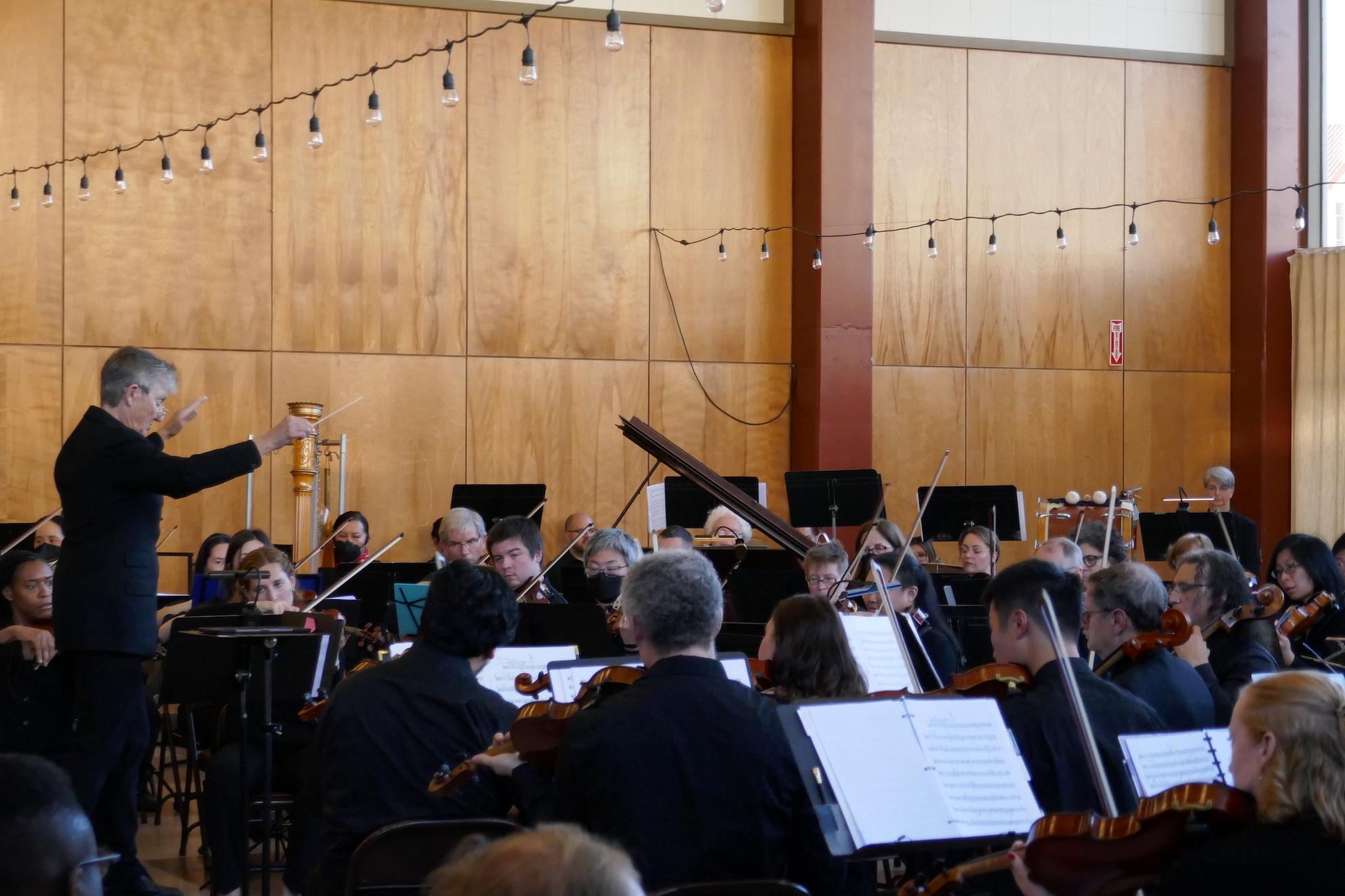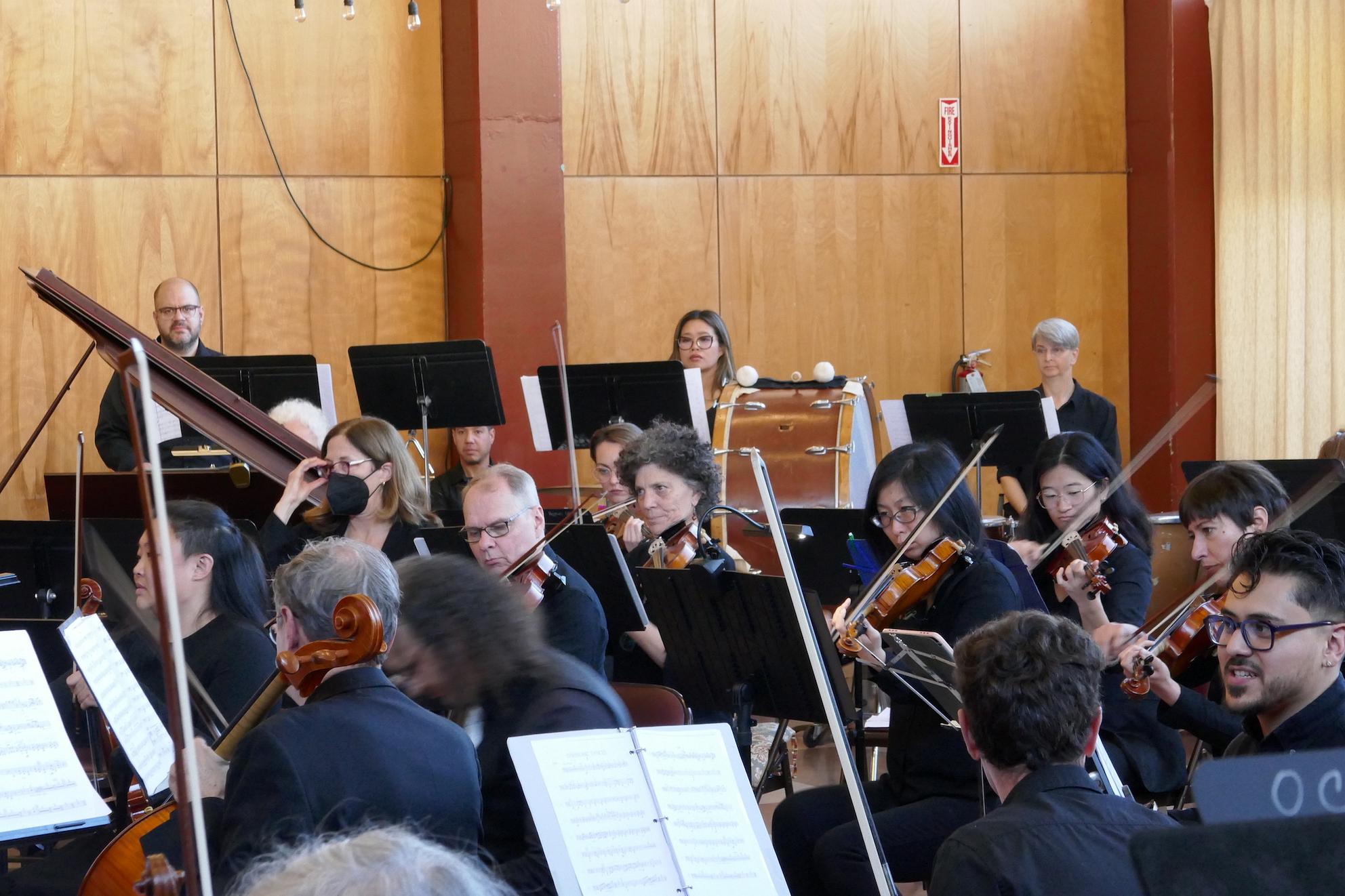Oakland Civic Orchestra: Symphonic Dance Party
First Presbyterian Church of Oakland
Oakland
Feb. 25, 2024
Classical music on the grounds of a church on a sunny Sunday afternoon — it just hits different. Live music in general I consider the ultimate form of mindfulness. It’s mesmerizing to witness art performed live, an immersive experience that keeps mind and spirit attuned to what’s happening around you. And a church feels fitting — there’s something sacred and triumphant about live music. It trills the heart.
Classical music is not my traditional milieu, but when I’m confronted with an opportunity to be astounded by momentous sounds in the court of gods, I find it hard to pass up.
Which is how I found myself walking through the courtyard of Oakland’s First Presbyterian Church, to hear the 75-piece Oakland Civic Orchestra play an afternoon concert. Even without extensive knowledge of classical music, I recognized these pieces from Doreen Carthwithen, Joaquin Turina, and Sergei Rachmaninoff. I’d heard some of them at the movies.
The concert itself didn’t take place in the main church hall, but in an auditorium. Though not as sacred-seeming, it did feel more intimate than a traditional concert hall, a cavernous mid-century space with a wall of glass above the symphony and wood paneled walls where the audience sat. Guests filed into the hall through a small courtyard, where the musicians mingled with family and friends during intermission, reminding me of what happens after a church service. The act of worship and the act of music are familial and holy at the same time.
And the music, of course, was far more thrilling than hearing it from your speakers at home or watching it on a screen, far removed from when and where it actually happens. Spread out over one half of the large hall, with no platform or barriers to separate the musicians from the audience, you truly did feel and hear everything in the thick of the action. That’s seventy-five musicians playing all manner of instruments, where you could keenly pick out the beauty of individual players and notes — the booming, guttural percussion, the lament of strings, the celebration of strings pitching toward higher notes and emotional heights. I marveled at the precision of every musician and group of instruments sounding like one beautiful idea, carrying the audience along on waves of sound and moods.
Watching the conductor, Martha Stoddard, as she flung her hands and body into the sounds was just as mesmerizing. My eyes occasionally drifted to watch her just as I enjoy watching the drummer of a band do their thing, almost as though I’m peeking in secret at the method to their madness. Her movements seemed just as driven as the orchestra, coaxing a cohesive, elegant sound from the disparate elements, using her whole body to exhort other humans to make magic in unison. It was as unseemly yet as natural as a cartoon mouse in a wizard’s hat, making brooms dance. But then, it also made perfect sense.
The title of the event — ”Symphonic Dance Party” — didn’t quite make sense before the concert began. There was no dancing, and it wasn’t literally a party. But to share the floor with dozens of musicians, to hear and watch them make music in a room large and intimate at the same time — there was something gritty and reckless and carefree in the idea. It also felt perfectly Oakland. It wasn’t like dance parties I usually frequent, but at the end I felt breathless all the same.







